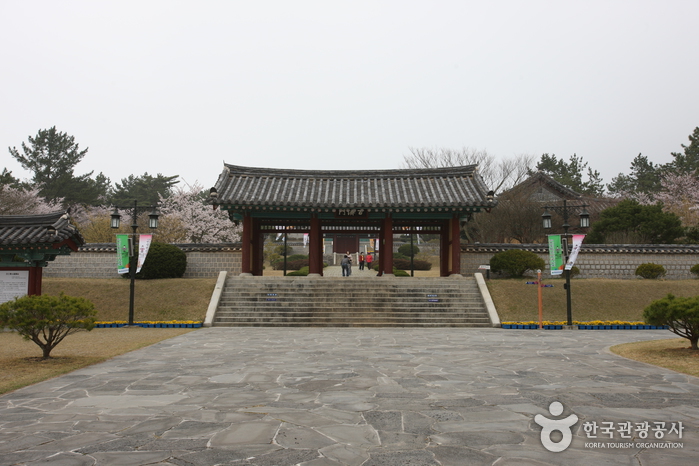Welcome to the Historical Site of Dr. Wangin
Step back in time and explore the hometown of Wangin Baksa, the Great Scholar, at the Historical Site of Dr. Wangin. Located at the foot of Munpilbong Peak to the east of Gurim village, this historical attraction is a testament to the importance and contributions of Wangin to Korean history. Join us as we delve into the life and achievements of this remarkable figure.
Seonggidong: The Birthplace of Dr. Wangin
Our journey begins at Seonggidong, the official birthplace of Dr. Wangin. Here, you can find the Yuheobi memorial monument, marking the spot where Wangin was born. Don’t miss the opportunity to visit Seongcheon, the well from which Wangin is believed to have drunk. Immerse yourself in the history of this significant location and learn about the early years of Wangin’s life.
Chaekgul, Munsanjae, and Yangsajae: Places of Study and Teaching
Halfway up Wolchulsan Mountain lies Chaekgul, Munsanjae, and Yangsajae, where Wangin studied and nurtured local pupils. These sites hold great importance in Wangin’s journey. Every March, a memorial is held at Munsanjae and Yangsajae to commemorate their significance. Explore these serene locations, surrounded by nature, and gain insight into Wangin’s passion for learning and teaching.
Statue of Dr. Wangin and Doljeonggogae
In front of Chaekgul, you’ll encounter a statue of Dr. Wangin, symbolizing his benevolent character. This inspirational monument serves as a reminder of his legacy. Just west of Seonggidong lies Doljeonggogae, a hill from which Wangin is believed to have gazed sorrowfully at his countrymen before embarking on his journey to Japan. Take a moment to reflect on Wangin’s departure and the impact he would later have on Japanese culture.
From Sangdaepo to Japan: Wangin’s Journey
Wangin departed for Japan from Sangdaepo, an international trading port during that time. The renowned Baekje scholar embarked on this journey at the request of Japanese Emperor Eungshin. Carrying ten books on the Analects of Confucius and a text of one thousand Chinese characters called Cheonjamun, Wangin took his knowledge and expertise across the sea. Discover how he gained the trust of the emperor and became an instructor to the crown prince, leaving an indelible mark on Japanese history.
A Tribute to Wangin’s Contributions
Wangin’s influence extended far beyond textbooks. He played a crucial role in the development of arts, crafts, and music in Japan, earning him the title of the originator of Japan’s Asuka culture. His name is revered in Japanese history, and his impact is still felt today. Come and explore this historic site, where you can gain a deeper understanding of Wangin’s remarkable contributions.
Visitor Information
The Historical Site of Dr. Wangin was reconstructed between 1985 and 1987 and continues to receive ongoing improvements to enhance accessibility for visitors. To reach the site, you can take an intercity bus from Central City Terminal to Mokpo Bus Terminal. From there, hop on a local bus bound for Yeongam and get off at the Historical Site of Dr. Wangin Bus Stop.
Get ready for an immersive journey into the life and accomplishments of Dr. Wangin at the Historical Site of Dr. Wangin. Experience history come alive as you explore this historic destination and uncover the fascinating legacy of one of Korea’s most influential figures.

